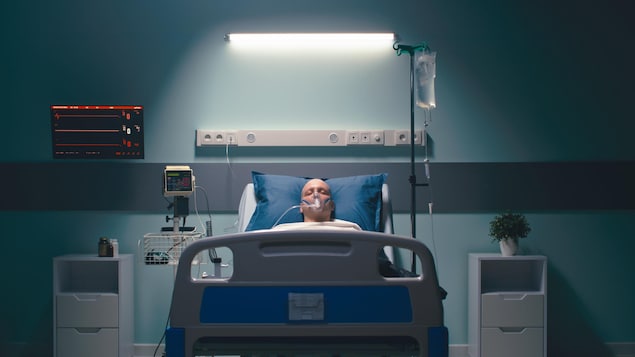The 2023 Clinical Practice Guidelines establish a harmonized brain-based definition of death and establish the clinical criteria for its determination
we said in a press release.
The new definition of death is the permanent cessation of brain function, characterized by the absence of consciousness and brainstem reflexes, including the ability to breathe independently. it applies to all people and all circumstances.
The line between life and death is very important
said dr Sam Shemie, critical care specialist at McGill University Health Center.
” In all our efforts to save lives with technologies that support life, […] It’s getting more and more complicated because we’re starting all this life-saving effort, and when there’s going to be a complete and permanent loss of brain function, it needs to be clear and certain. And the purpose of the guidelines is to eliminate the risk of misdiagnosis. »
The latest guidelines on this topic date from 2006. The revised version also updates the criteria for determining death in the event of severe brain trauma or cardiac arrest. These criteria are essential to ensure the legal and ethical practice of deceased organ donation.
were named.
The new guidelines also aim to build trust and integrity within the healthcare system and address legal and ethical issues.
leveling
differences between countries
The basic criteria that define a catastrophic brain injury—that is, a permanent, irreversible injury that is untreated, unconscious, lacking motor function, and unsafe—are the same virtually everywhere in the world.
said dr Shemie.
That doesn’t mean there won’t be any variability
between countries or even within a country. Doctors may wonder, for example, how long to wait after the injury before determining death or what additional tests to order.
It is that variability
The new guidelines seek to address these issues by providing a common frame of reference for all caregivers.
Especially since brain death was diagnosed It is not easy
said dr Shemie.
It’s something complicated
he added.
” It takes a checklist to make sure things are clear, irreversible, and permanent. When we say someone is brain dead in ICU, it must be clear that there is no risk of error. »
This certainty could also ease the grief of families whose loved ones may have been perfectly healthy just hours before and who are now grappling with this new reality.
dr Shemie is particularly proud that the committee he chaired that created the new guidelines was able to count four people among its members who had lost loved ones in intensive care.
When a person comes to our intensive care unit with a serious brain injury, we know the risk of death is very high.
he said.
” We are doing everything we can to save lives, but we know the risk of death is very high. But the family needs time to come to terms with the fact that the patient could die. »
It is therefore important for doctors to be able to communicate with the patient’s environment in clear language and not with the complicated words of medicine
. The guidelines therefore also include advice on accompanying the family with patience and compassion.
The researchers also produced a 90-second bilingual video Explain the complexity of a brain dead person
said dr Shemie.
Since there is a machine that can breathe, that means the body can survive but the brain cannot.
he specified.
” And it’s a different concept than the traditional concept of death from cardiac arrest. The goal of all our resuscitation programs is to save lives with brain function. »
And when brain function has completely and permanently stopped, we need to be able to patiently counsel the family as best we can to try to help the family face the reality.
he notes.
This work was conducted by a multidisciplinary group of 60 people consisting of critical care nurses and physicians (adults and children), radiologists, neurologists, neurointensive care specialists, anesthesiologists, ethicists, advocates, patient families, public partners and methodologists from across Canada.
The new guidelines were recently published in a special issue of Canadian Journal of Anesthesia.

Extreme problem solver. Professional web practitioner. Devoted pop culture enthusiast. Evil tv fan.




;Composite=(type=URL,url=https://images.radio-canada.ca/v1/assets/elements/16x9/outdated-content-2021.png),gravity=SouthEast,placement=Over,location=(0,0),scale=1)


